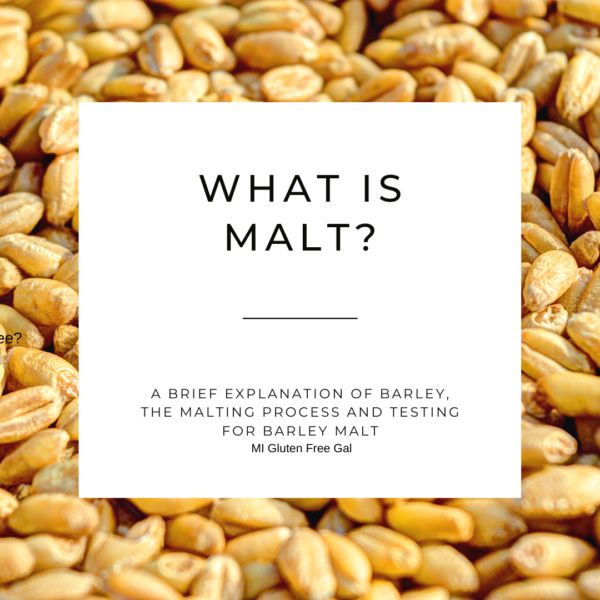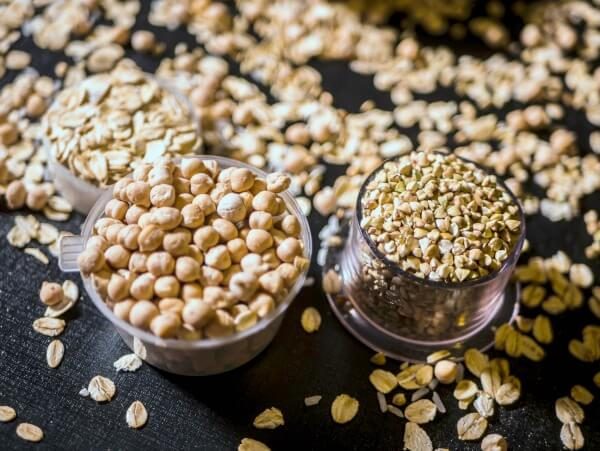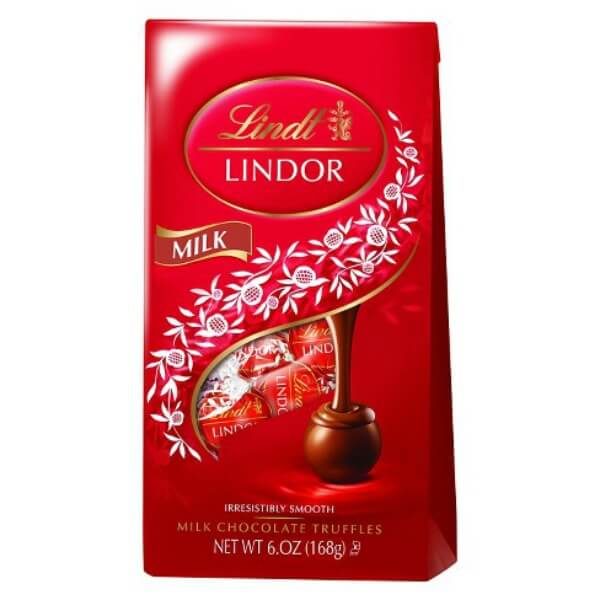Malt: Process, Product, and Gluten Free Status
As an Amazon Associate and member of other affiliate programs, I earn from qualifying purchases.
“What is malt? How is it made? Is it gluten free? What is it found in? Answers to this and more, in the post below.

What is Malt?
In the United States, we think of malt is strictly being made from barley. However, technically any grain that undergoes a malting process can be called “malt.” From Wikipedia – “Malt is a germinated cereal grain that has been dried in a process known as “malting”. The grain is made to germinate by soaking in water and is then halted from germinating further by drying with hot air.”
Any Gluten Free Grain Can Be Malted
While wheat, barley and rye are most used in the process, other grains can be used to make malt. For example, Bard’s Beer malts sorghum for their gluten free lager. Teff and buckwheat can be malted for beer as well. Grouse Malt House even malts corn. Once I saw a malted buckwheat in a gluten free cereal.
Please understand that gluten free grains, which undergo malting, are gluten free. Products made with gluten free malted grains are therefore safe to consume on a gluten free diet.

Is Malt Gluten Free?
The answer to this depends on where you live. In the United States, the word “malt” on a food label means it contains barley. Regardless of gluten parts per million, the FDA states nothing made with barley or barley malt can be declared gluten free. End of story. The same applies for Canada, as Shelley Case mentions in her article “What is Malt?”
However, in the UK, the rules are different. Consider Coeliac UK’s post on “What is Barley Malt Extract?” They state that barley malt extract can be eaten in small amounts. However, the amount of barley malt extract is not declared on packaging, simply its presence. Therefore, people in the UK are advised only to eat those foods labeled gluten free.
Barley Malt Testing with ELISA
However, how does one test for gluten products containing barley malt? The Gluten Free Dietitian explains the issue in her article about barley malt extract. She states “It is very tricky to test for barley contamination in food.” Why? Barley malt extract undergoes hydrolysis. She further explains it in this article about Sandwich ELISA testing and Hydrolyzed Gluten.
What is hydrolysis? In an Explanation of Hydrolysis by The Balance, “hydrolysis is a chemical reaction in which water is used to break down the bonds of a particular substance.” However, current methods testing complete gluten peptides, not fragments. This is why NIMA cannot detect gluten.

FDA, Barley Malt, and Gluten Free Labeling
In August of 2020, the FDA made a ruling on fermented and hydrolyzed foods. This ruling declared that foods with a gluten free label MUST show ingredients are gluten free PRIOR to hydrolysis or fermentation. This rule covers fermented foods such as beer, and hydrolyzed foods such as barley malt. In plain English, this means beers creatd with gluten grains CANNOT be labeled gluten free. (Look at you, Omission.) The ruling discusses compliance for distilled vinegars.
What about soy sauce? Soy sauce, a sauce made from fermented soy and wheat, canno be labeled gluten free unless the ingredients test under 20 ppm, prior to fermentation. On the Q&A for Gluten Free Food Labeling, it states “Also, if the soy sauce is made using a gluten-containing grain that is processed to remove gluten resulting in the presence of less than 20 ppm gluten prior to the fermentation process, then it can bear a “gluten-free” claim.”
In the Federal Register, where the FDA responds to comments left by concerned individuals, please know they still state “we are clarifying that the final rule does not require testing of ingredients.” However, they ” estimate that most manufacturers (75 percent) already have a gluten control SOP that includes testing.” The register also proposes methods to manufacturers for accurate testing. Manufactureres must comply with these guidelines by August 13, 2021.
For more on this topic, please see Gluten Free Watchdog’s series of posts on the FDA’s Final Rule.
A Better Test for Detecting Gluten in Malted Barley?
A few years ago, researchers started developing tests that may better detect gluten in malt. Analyst Michelle Colgrave wrote a paper, highlighting the research she did using “liquid chromatography – mass spectrometry.” This type of test measures things on a molecular level, and can recognize gluten fragments. Read more about it in this Forbes article.

What Contains Barley Malt?
One finds barley malt in many expected places, such as malt powder in Whoppers candy and the powder to make ice cream malted shakes. However, one also finds barley malt in Kellogg’s Rice Krispies, Kellogg’s Corn Flakes, Beer, some Lindt chocolates, and more.
If you must eat a gluten free diet, it is important to read all ingredient labels. Years ago a product made in the UK, but sold in the US, was incorrectly certified gluten free by an organization. This is why it’s always important to read ingredient labels. Especially of products made in a foreign country.
Bottom Line
If you live in the United States, any product that simply states malt, malt vinegar, or malt extract, is derived from barley. Therefore, is it not safe for consumption for those who are on a gluten free diet. However, beers and other foods made with malted gluten free grains, such as malted sorghum or malted teff, are safe for consumption.

Thank you for your work to keep the GF community safe!
Thanks for the compliment. It definitely helps to keep me going. 🙂
Thank you for the info you provide. Very helpful!
You’re welcome!